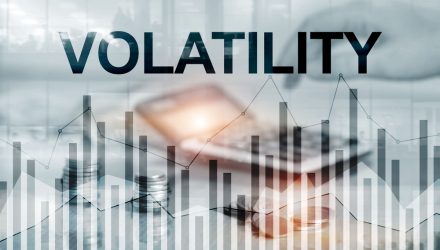After a 2023 marked by a comeback in the stock market despite higher-for-longer interest rates, 2024 should bring increased volatility in a year full of unknowns that could invoke heavy market fluctuations.
Many of the common market speed bumps that were present in 2023 could be amplified in 2024. As Timothy Ramsey of Goldman Sachs Asset Management noted, “stocks may exhibit more volatility going forward as investors grapple with multiple headwinds, including stickier inflation, supply chain realignment, geopolitical tension, deglobalization and energy insecurity.”
The stock and bond markets have improved versus 2022’s bearish run. But 2024 could bring heightened volatility in a presidential election year. The policies of presidential candidates could impact the economy significantly and thus cause market fluctuations. Furthermore, the actions of the Federal Reserve will continue to dictate market movements.
“Global markets will experience greater volatility in 2024 as the Federal Reserve cuts benchmark interest rates fewer times than many investors are pricing in, strategists at the BlackRock Investment Institute said at a panel discussion on Tuesday (Dec. 5),” Reuters reported.
There are a plethora of options available to temper fluctuations in equities, like adding more bonds. One way to combat the angst caused by market uncertainty is to employ alternative strategies that can help mute volatility. And one of the those is managed futures.
“A Managed Futures—also commonly known as Trend-Following—strategy may offer some shelter from ongoing market gyrations,” Ramsey added.
Rather than retail investors employing the strategy individually, an easier way is the actively managed iMGP DBi Managed Futures Strategy ETF (DBMF). One of the prime advantages of active management is that it provides dynamic market exposure where portfolio managers can easily flex with changing market conditions by adding to or subtracting from the fund’s holdings when current conditions warrant a change. That’s helpful in times of heavy volatility.
Powered By a Dynamic Beta Engine
Employing a managed futures strategy may sound complex. But it doesn’t have to be with DBMF. The fund employs a Dynamic Beta Engine that determines the fund’s positions within domestically managed futures and forward contracts.
The engine analyzes the trailing 60-day performance of commodity trading advisor hedge funds. It then determines a portfolio of liquid contracts that would best mimic the hedge funds’ average performance. It builds its holdings based on a trend-following strategy of what hedge funds are holding in the past two months.
DBMF takes long positions in derivatives with exposures to asset classes, sectors, or markets that are anticipated to grow in value, and takes short positions in derivatives with exposures expected to fall in value. As mentioned, this allows investors to capture the upside while also protecting the downside in heavy volatility.
For more news, information, and analysis, visit the Managed Futures Channel.

